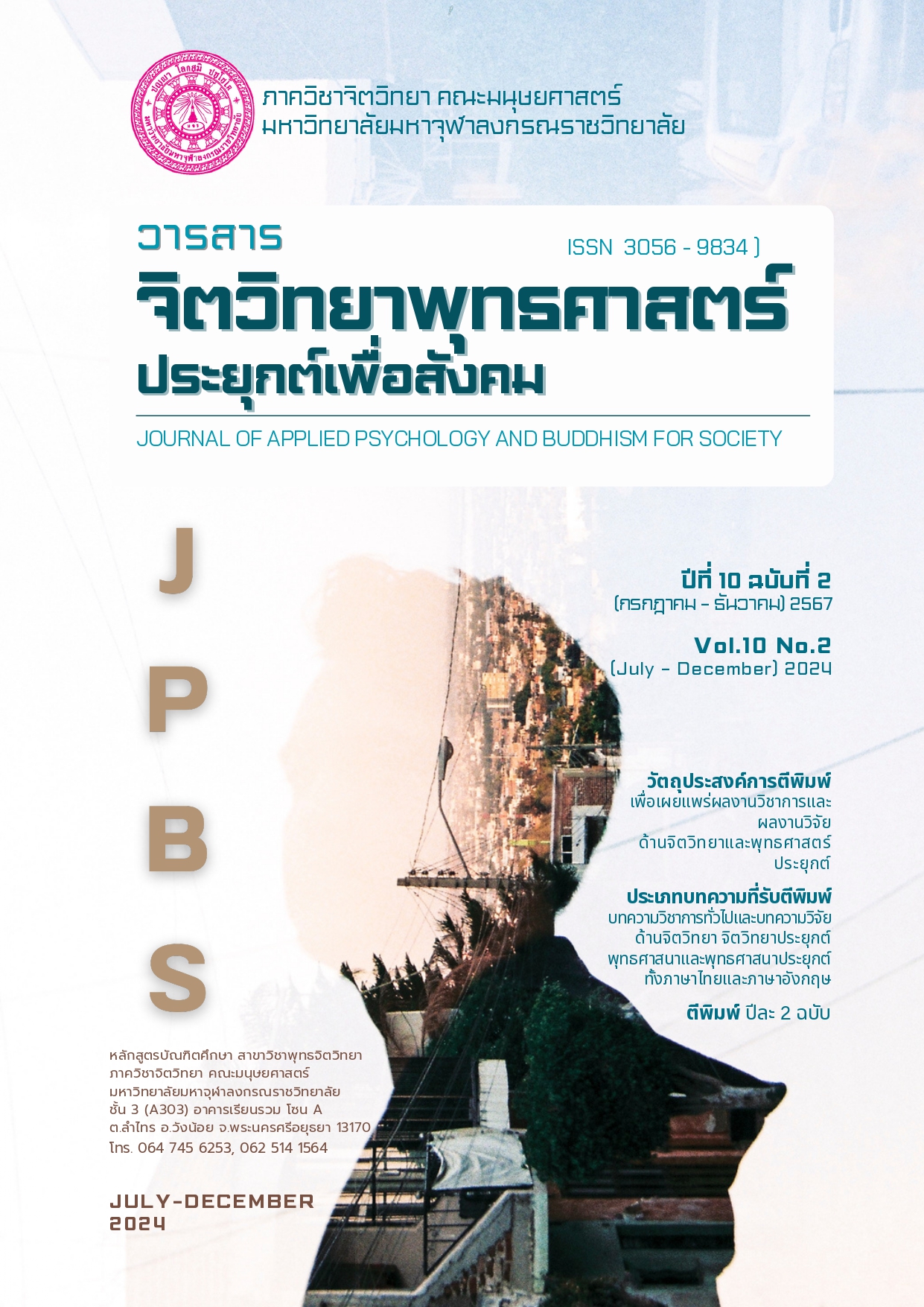Tiger Conservation Huai Kha Khaeng Forest According to Buddhist Principles
Keywords:
Buddhism, Tiger Conservation, Huai Kha Khaeng Forest, Law of Dependent Origination (Idappaccayata), Four Divine Abidings (Brahmavihara)Abstract
The conservation of tigers in Huai Kha Khaeng forest can be approached through the principles of Buddhism, specifically by applying the concept of "Idappaccayata" (the Law of Dependent Origination), which emphasizes the interconnectedness of all factors on Earth. This principle asserts that every occurrence is dependent on contributing conditions; similarly, when something ceases, conditions play a role in its cessation. Additionally, the principles of the Four Divine Abidings (Brahmavihara) - loving-kindness (metta), compassion (karuna), sympathetic joy (mudita), and equanimity (upekkha) - are crucial for sustainable coexistence with nature. When we cultivate these qualities, it leads to love, care, and shared responsibility for protecting and preserving the environment for the benefit of ourselves, others, and all living beings.
These Buddhist principles can be applied to the conservation of tigers in Huai Kha Khaeng forest, which currently faces the threat of extinction due to human activities such as deforestation, wildlife hunting, and illegal wildlife trade. Such activities are considered crimes against wildlife, particularly affecting the Indochinese tiger, a species native to this forest region. Currently, only about 80 to 100 individuals remain, serving as indicators of the area's rich biodiversity and ecological balance. Thus, conserving the tigers of Huai Kha Khaeng is an urgent necessity. However, it is equally important to consider the other wildlife within the ecosystem, as they are all interconnected. For instance, tigers require herbivorous prey to survive; herbivores, in turn, depend on vegetation for food; and plants rely on water and nutrients through the process of photosynthesis.
To achieve successful conservation of Huai Kha Khaeng’s tigers in line with Buddhist principles, it is essential to adopt and integrate these teachings into community-based practices. This approach can drive sustainable solutions to protect the Indochinese tiger, which sits at the top of the food chain and serves as a symbol of the forest’s richness. Maintaining this delicate balance is vital for preserving this natural heritage for future generations of Thai society. If the tiger were to disappear from the forest, the equilibrium of the ecosystem would gradually deteriorate.
References
จินตนา แก้วใส และคณะ. (2561). ความหลากหลายทางพันธุกรรมของเสือโคร่งในประเทศไทย: ผลกระทบจากการสูญเสียถิ่นที่อยู่และการลักลอบล่าสัตว์. วารสารวิทยาศาสตร์ มหาวิทยาลัยขอนแก่น, 40(2), 313-323.
มหาวิทยาลัยมหาจุฬาลงกรณราชวิทยาลัย. (2535). พระไตรปิฎกภาษาบาลี ฉบับมหาจุฬาเตปิฏกํ 2500. กรุงเทพฯ: โรงพิมพ์มหาวิทยาลัยมหาจุฬาลงกรณราชวิทยาลัย.
ศักดิ์สิทธิ์ ซิ้มเจริญ และคณะ. (2549). การติดตามประชากรเสือโคร่งในเขตรักษาพันธุ์สัตว์ป่าห้วยขาแข้ง-ทุ่งใหญ่นเรศวร. รวมบทคัดย่อการสัมมนาทางวิชาการเรื่องสัตว์ป่าเมืองไทย ครั้งที่ 27: การฟื้นฟูสัตว์ป่า. การสัมมนาทางวิชาการเรื่องสัตว์ป่าเมืองไทย ครั้งที่ 27 : การฟื้นฟูสัตว์ป่า. (น. 74). กรุงเทพฯ : มหาวิทยาลัยเกษตรศาสตร์, กรมอุทยานแห่งชาติ สัตว์ป่าและพันธุ์พืช, สมาคมอนุรักษ์สัตว์ป่า-ประเทศไทย และ องค์การสวนสัตว์ในพระบรมราชูปถัมภ์.
“________”. (2007). ประชากรและถิ่นที่อยู่อาศัยของเสือโคร่งในเขตรักษาพันธุ์สัตว์ป่าห้วยขาแข้ง ประเทศไทย. วารสารวิทยาศาสตร์การสัตว์ป่า, 31(2). 142-153.
ส.สุขสะเวต และคณะ. (2022). การใช้ที่อยู่อาศัยเชิงพื้นที่และชั่วคราวโดยเสือโคร่งสายพันธุ์เหยื่อหลักในพื้นที่คุ้มครองสองแห่งของป่าตะวันตกตอนใต้ของประเทศไทย. วารสารสิ่งแวดล้อมและทรัพยากรธรรมชาติ, 20(6). 563–574.
หทัยทิพย์ หงส์ชูเกียรติ. (2566). วิกฤตเสือโคร่งไทย นักล่าแห่งพงไพรกับเส้นทางของผู้พิทักษ์. สืบค้น 29 พฤษภาคม 2567, จาก https://www.anurakmag.com/featured-posts/12/25/2023/thai-tiger-crisis-hunter-of-the-forest-and-the-path-of-the-guardian-dr-saksit-simcharoen.
Downloads
Published
How to Cite
Issue
Section
Categories
License
Copyright (c) 2024 Journal of Applied Psychology and Buddhism for Society

This work is licensed under a Creative Commons Attribution-NonCommercial-NoDerivatives 4.0 International License.





